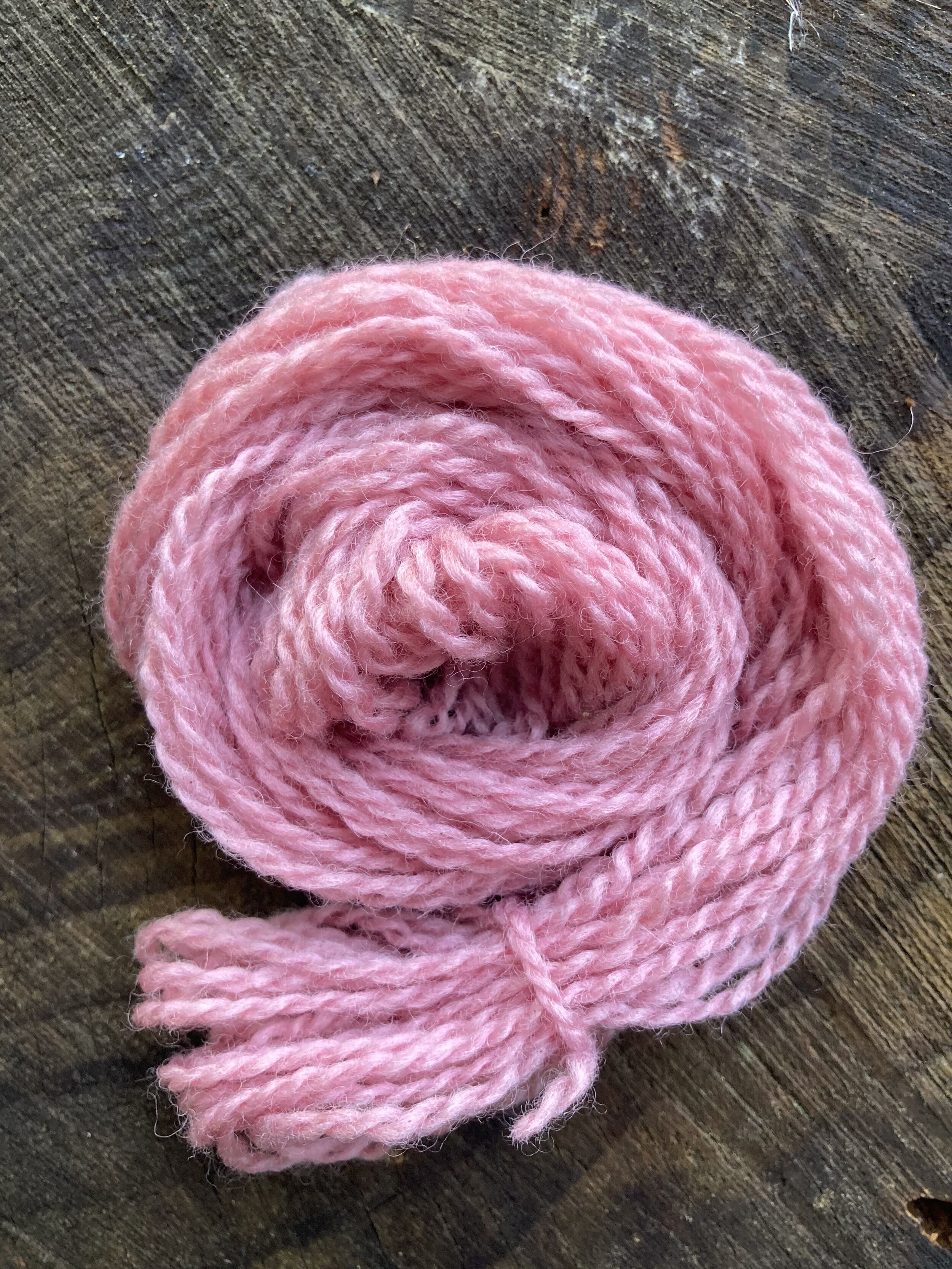Xanthoria parietina lichen (No heat)
X. parietina, also known locally as maritime sunburst lichen, is one of the most common lichen species observed in urban parks and treed spaces in the Pacific Northwest. The vegetative body of the lichen (thallus) is foliose in form, meaning its shape is lobed or leaflike. The upper surface is often a bright, cheerful yellow but it can also be orange or a greenish yellow. While it does grow on rocks, I find it more often growing on hardwood branches near, or over, water. This lichen in particular appears fairly tolerant of air pollution and seems to have adapted easily to urban green spaces.
For optimal dye potential, the recommended length of time to ferment X. parietina (i.e., from harvest to use) is approximately 12 weeks/3 months. This vat on the other hand had been left to ferment for approximately 16 months, so please note that deeper colours than these below are possible. Let’s just vaguely blame the pandemic and move on.
Note: I was first introduced to the dye potential of this species through both Lichen Dyes: The New Source Book by Karen Diadick Casselman and a mushroom dyeing workshop with Alissa Allen (Mycopigments).
TL:DR: Baby blue and cotton candy pink are possible with this cheerful lichen through a fermentation process and access to sunlight. If trying this out yourself, pick a sunny, summer day for best results.
Foraging for lichens
Whenever foraging for lichens, it is critical to be respectful and harvest only what has fallen naturally on the ground, especially if it’s fallen on urban lawns or driveways, etc. Lichens which have fallen onto the forest floor still provide important sources of nutrients like nitrogen for the flora. In this case, I harvested the lichen some branches in Surrey, BC which had fallen onto a gravel parking lot after a windstorm and were due to be chipped.
Please be thoughtful foragers when it comes to lichens which tend to be sensitive and extremely low growing.
Fermentation Vat
This process involves using the ammonia method (AM) to extract colour from the lichen. I will endeavour to create a separate post about these processes, but for now I’ll just say that I collected 136.1 grams of X. parietina (from fallen branches) and placed them in a sealed container which was filled with half household ammonia and half water. This was then rigorously shaken every few days to weeks before forgetting about it completely for at least a year. My “vat” is a gallon-sized plastic juice container after the “incident” with the previous glass gallon-sized vat which I broke on our (previous) carpet. The container shown was filled to near the top before being drained for various projects on the day of this dyeing. Two pre-soaked skeins of wool (no mordant) were placed into the glass jar shown.
Strained
Here I used my standard mesh 1-gallon paint bag as a strainer to catch lose lichen pieces and keep them separate from my fiber. The glass jar was then filled to the top and sealed.
Leave it to rot
I set out to only have the two wool skeins in the alkaline vat solution for about three days, but sadly this was delayed. Instead the fiber sat dejected in the jar for approximately four months. I do not advocate for this approach as this is too hard on the wool which came out weak and brittle. So don’t do this, instead try the three day process, that’s my new plan. Here below is a video of the next steps which involve taking both skeins out and placing one in darkest to dry and the other in bright sunlight.
Safe Place to Tan
I needed a place safe from my mischievous tiny humans so I placed a bowl on top of our car held in place with a rock. I wouldn’t suggest this for safety reasons though, you just need a place that gets lots of direct, warm sunlight.
Within 20 minutes
Here you can see the top of the skein begin that magical transformation to blue. The sunlight turns the wool from pink to a pale blue.
Baby blue
Here is the final colour once it had finished drying.
Dried out of the sunlight
The skein that dried in darkness stayed a cotton candy pink. I would be very interested in retracing these steps using a more optimal timeline - 12 week fermentation with a three day soak and see what a difference that makes to the colours. Soon!
Results
Left skein: cotton candy pink, dried in no light
Right skein: baby blue with grey overtones, dried in sunlight











